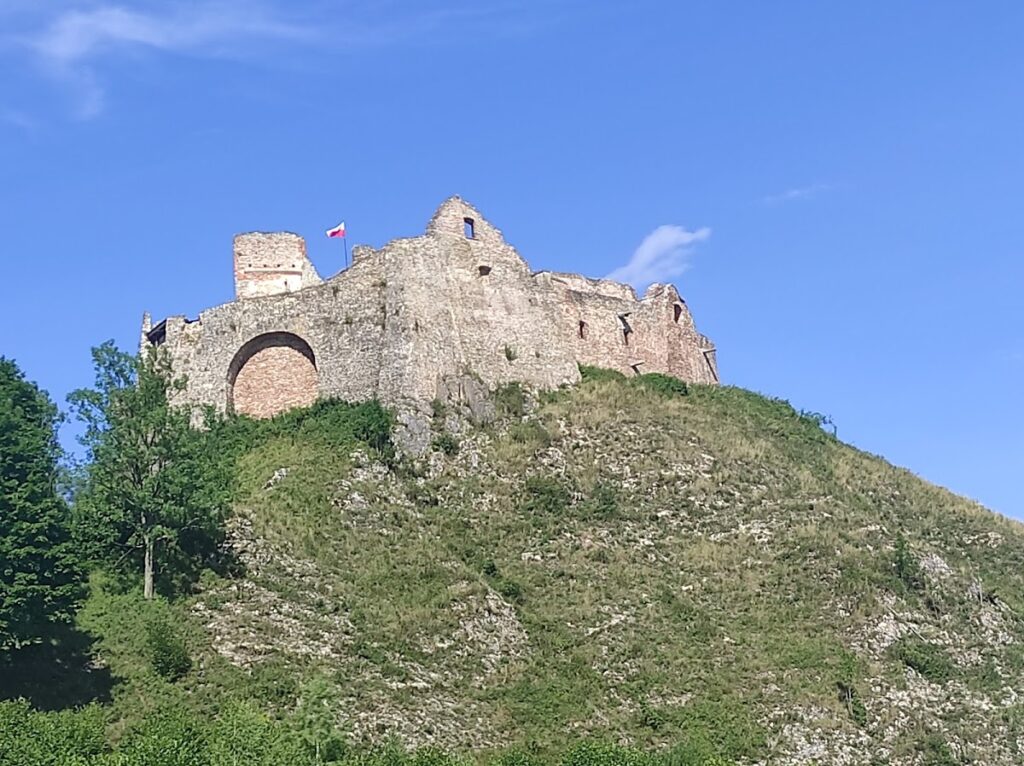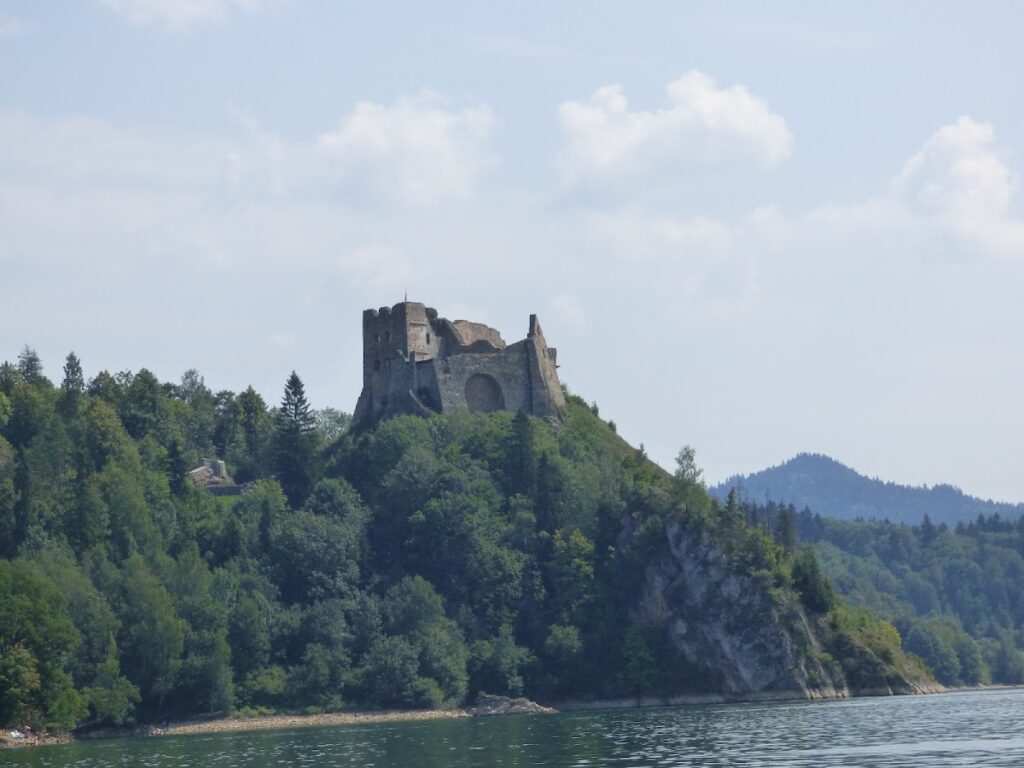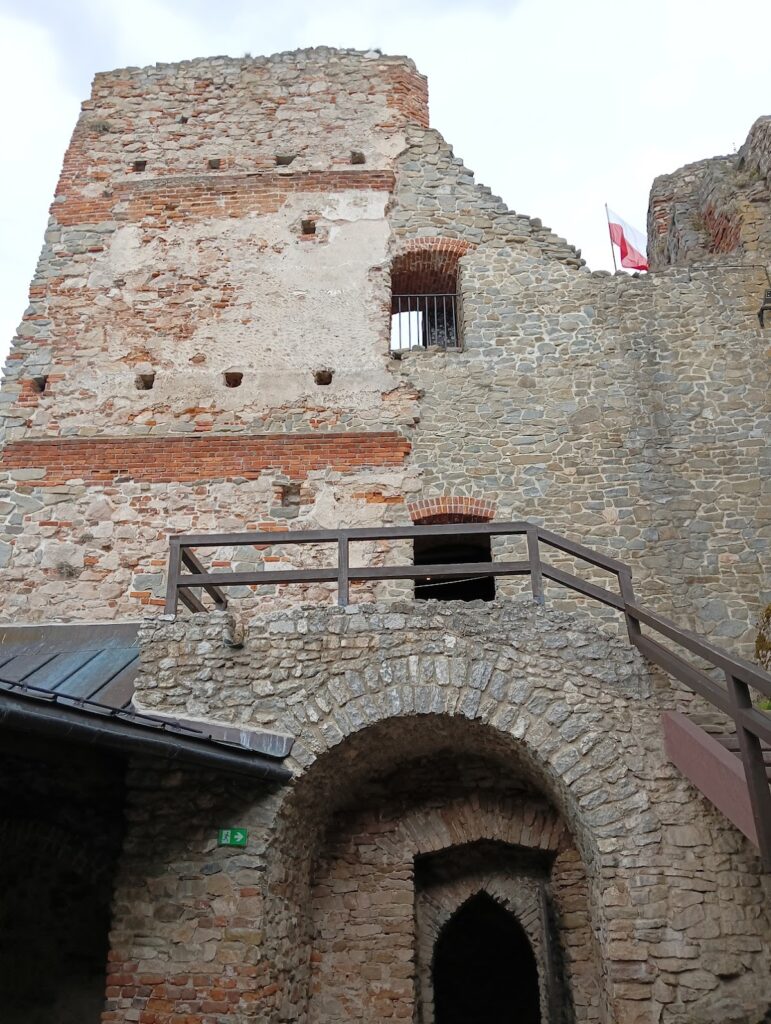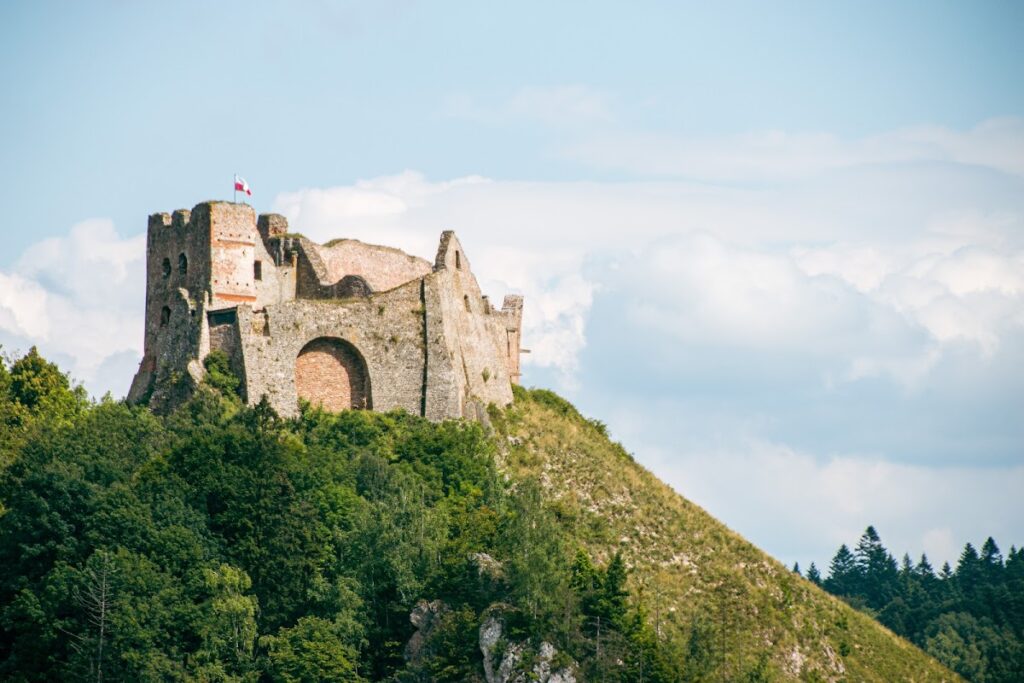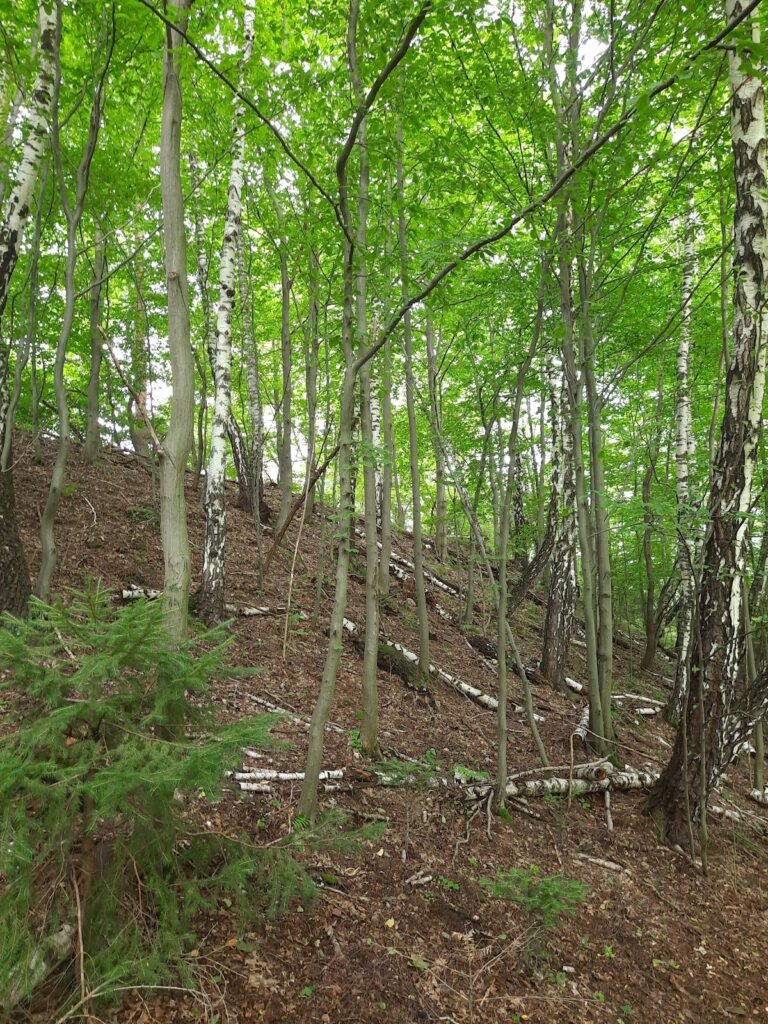Czorsztyn Castle: A Medieval Polish Fortress in Poland
Visitor Information
Google Rating: 4.7
Popularity: Medium
Google Maps: View on Google Maps
Official Website: www.pieninypn.pl
Country: Poland
Civilization: Medieval European
Remains: Military
History
Czorsztyn Castle is located in the municipality of Czorsztyn, Poland, and was built by the medieval Polish civilization. Its origins date back to the late 13th century, when a wooden fortress established on Zamkowa Góra hill was originally connected to the Clarisse monastery in Stary Sącz. This early stronghold, known initially as Wronin, came under royal ownership during the 14th century. Notably, King Casimir III the Great oversaw substantial stone reconstruction and expansion that laid the foundation for the castle’s role as a key border fortification.
Throughout the Middle Ages, Czorsztyn Castle served as a defensive outpost protecting the Polish-Hungarian border. It also functioned as a customs post, monitoring vital trade routes linking Poland with Hungary and important regional centers such as Nowy Targ and Sącz. The castle hosted Polish monarchs temporarily during their travels to Hungary, illustrating its strategic importance. The management and upkeep of the fortress passed through various starosts, royal administrators responsible for the surrounding lands, including the Paniewski family in the 15th and 16th centuries.
In the early 17th century, Jan Baranowski assumed stewardship of the castle and introduced major renovations. His tenure is noted both for architectural modernization and for his reputation as a strict ruler, with records indicating harsh treatment of local inhabitants. During this period, the castle adapted to changing military demands, including the installation of artillery defenses and enhancements suitable for firearm use.
Czorsztyn Castle was the focal point of several military events. In 1651, it became the site of a brief occupation by Aleksander Kostka-Napierski, who led a peasant uprising in the region, but royal forces swiftly reclaimed the fortress. Just a few years later, in 1655, King Jan II Kazimierz Waza sought refuge within its walls during the Swedish invasion of Poland. The struggles of the 17th century left their mark on the castle’s history, confirming its ongoing military and political significance.
The castle’s decline began in the 18th century after it sustained further damage amid the Polish succession wars, including plundering by Cossack troops. A lightning strike in 1790 destroyed the roofs, which accelerated its abandonment. Subsequently, the estate came under Austrian administrative control and later passed to the Drohojowski family, who lacked resources to maintain it. During the 19th century, archaeologists and conservators began exploring and preserving the ruins, with more systematic restoration efforts beginning in the mid-20th century. After the construction of the Czorsztyn reservoir in 1997, which altered the surrounding landscape, Polish authorities increased conservation work to stabilize and study the site.
In the 19th century, Czorsztyn Castle became an emblem of Polish historical heritage and romantic nationalism. It inspired various legends and artworks that celebrated its medieval past. Official recognition came in 1968 when it was registered as a historic monument, ensuring its protection as a cultural treasure reflecting centuries of regional history.
Remains
The ruins of Czorsztyn Castle sit atop Zamkowa Góra hill at about 588 meters above sea level, positioned roughly 50 meters above the surface of Czorsztyn Lake. The complex unfolds across three terraces ascending the slope: the lower castle, the middle castle, and the upper castle. These distinct sections reveal the castle’s vertical design adapted to the hill’s topography, providing natural defensive advantages.
The earliest confirmed construction dates back to the late 13th or early 14th century. Among these initial elements was a free-standing cylindrical stone tower about 10 meters wide with walls 3.5 meters thick, built from rubble stone. This tower likely offered a strong defensive point for the upper castle area before being dismantled by 1616. Around the same time, the upper and middle castles were enclosed by a polygonal curtain wall roughly 2.2 meters thick. This wall, featuring battlements for defenders, measured about 55 by 20 meters and contained a pointed-arch gate with a preserved wooden beam lock, evidence of medieval military architecture.
Later in the 14th century, a two-story residential building with three rooms was built leaning against the curtain wall within the upper castle. The walls were raised during this period in a Gothic style typically associated with King Casimir III the Great’s building campaigns. This addition shows the castle’s role not only as a fortress but also as a noble residence.
In the late 15th century, defensive enhancements included the construction of a second wall and a rectangular gatehouse fortified by a barbican turret. The barbican featured a portcullis, a heavy grille lowered to block entry, and the entrance path wound deliberately to slow attackers. This complex entry was characteristic of advanced late medieval fortifications and is credited to starost Jakub Cielę Paniewski.
The lower castle originated in the 16th century and occupies a rectangular plateau about 40 by 60 meters, enclosed by stone walls. A semicircular bastion around 3 meters in diameter projects from these walls. This area contained economic and service buildings such as stables, a brewery, a bakery, and a kitchen, supporting daily castle life and provisioning.
Significant changes came under starost Jan Baranowski between 1629 and 1643. He built a four-story rectangular artillery tower designed specifically for firearms like cannons and muskets. Known as the “Baranowski tower,” it had embrasures—small openings for firing—and narrow windows. The tower included wooden floors and a chimney, indicating its use as living quarters in peacetime. Baranowski also added a decorative third floor with a swallowtail battlement—a style common in the nearby Spisz region—and created an arcaded gallery supported on pillars. Together, these features introduced Renaissance stylistic elements, including inscribed portals celebrating Baranowski’s rule.
Archaeological work uncovered a vaulted cellar beneath the castle containing oak doors marked with the date 1633. Historical records suggest this cell may have been used to imprison townsfolk from nearby Krościenko during Baranowski’s administration, illustrating the intertwining of the castle’s architecture with local social history.
The castle’s early 17th-century armaments included a variety of firearms such as hand cannons (called hakownice), early muskets (śmigłownice), a bronze cannon, and muskets, maintained by a permanent guard of about ten well-equipped soldiers. These defense arrangements underline its military importance during a period of changing warfare technology.
Today, the surviving ruins include sections of the curtain walls, the partially reconstructed Baranowski artillery tower complete with floors and stairs, the remains of the gatehouse and barbican, vaulted cellars, and foundations of the original cylindrical tower. Several architectural details, including inscribed portals, have been preserved in a lapidarium—a display of stone artifacts.
The castle grounds retain a rock-cut reservoir six meters deep, carved into the upper courtyard to collect rainwater, demonstrating medieval water management. From the terraces, one can observe extensive views of the Dunajec river valley, preserving the fortress’s commanding position.
Conservation efforts have stabilized the remaining walls, reconstructed certain floors and staircases, and created pathways with educational panels. The surrounding area includes a protected natural reserve established for its unusual microclimate and rare plants such as the Pieniny yellowwort (Pszoanak pieniński), which grows only in this region, linking the site’s cultural heritage with its natural environment.
